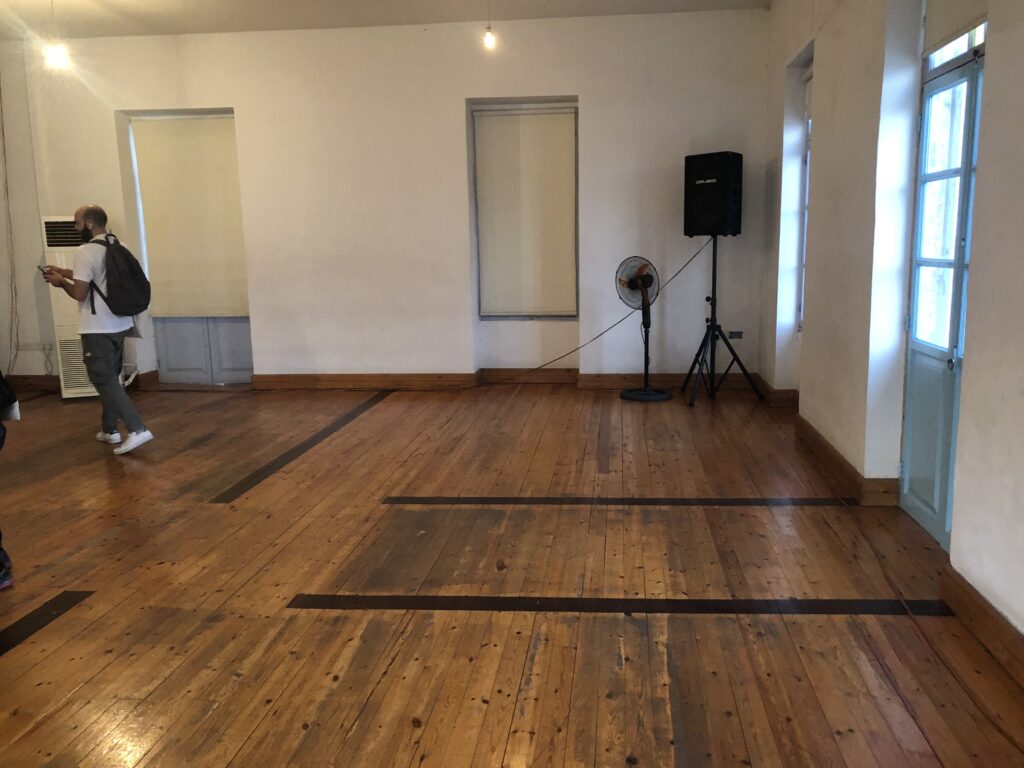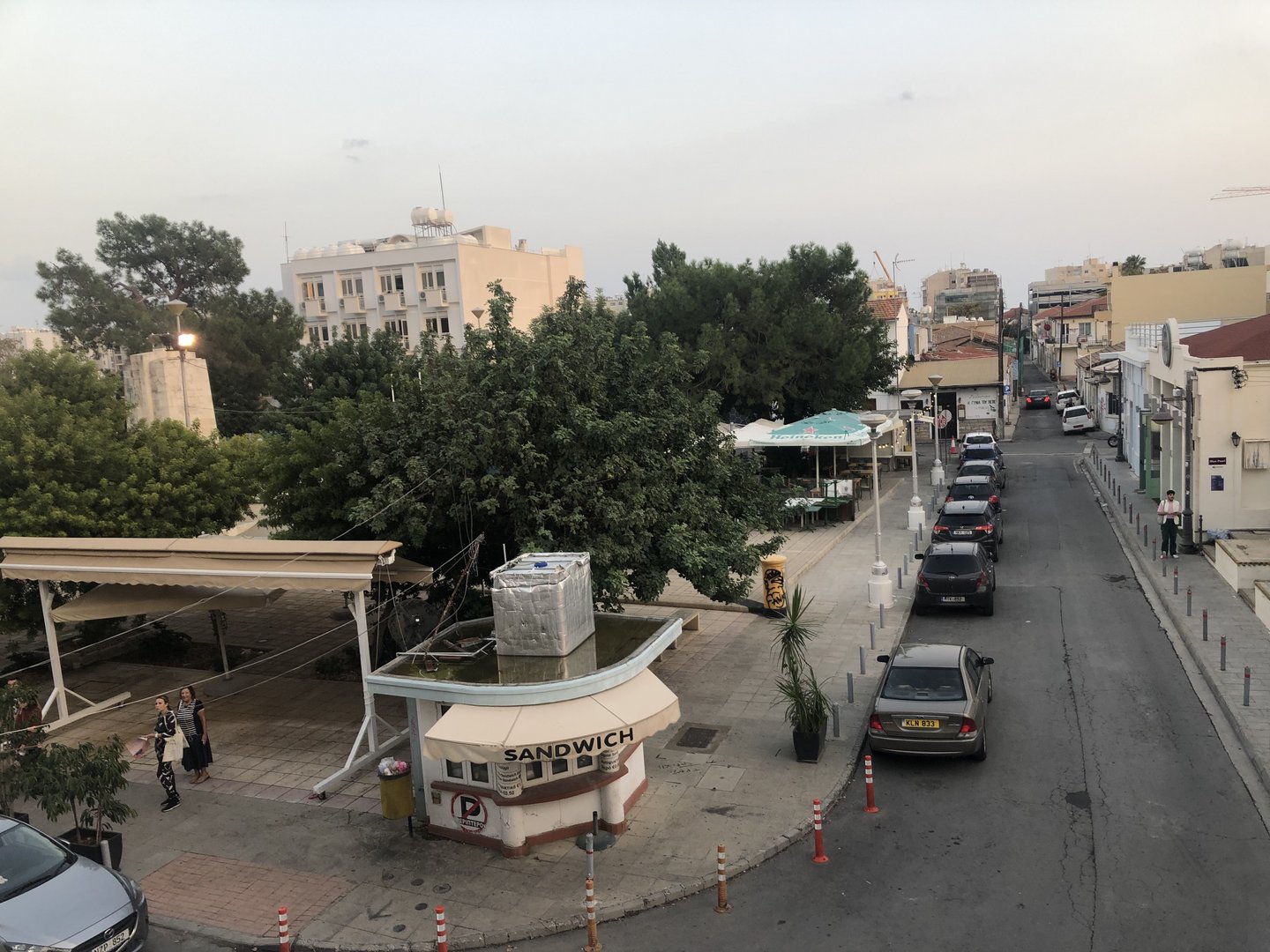Now home to a busy theatre and university buildings, Heroes square was previously a multicultural red light district
Now home to a bustling, vibrant student life, Limassol’s Heroes Square has a past full of tales of pain, addiction, friendship and solidarity.
The echoes of its past remain etched in the memories of those who regaled these stories during a guided walk around the area led by the Rialto Theatre, itself located there.
Nitsou, the prostitute said to have killed herself; Takis, the city’s famous sandwich man; Lambis the ‘aphrodisiologist’ who would inspect married men too ashamed to go the hospital for fear of admitting they had been with other women; there are many names who have shaped the history of the square and whose stories have passed down over the years.
Only a few decades ago the small stretch of space behind Anerxatisias street was home to some 30 cabarets, including Saloon Rouge, Cabaret Rex and Jolly Night.
The Rialto was born on March 26, 1933 after the Chrysochou brothers returned from the US and sought to build a cinema. At the time, tickets cost three to six grosia (piasters) and Rialto would host the city’s famous carnival dances, attracting people from all walks of life, swaying away under the cover of their masks.
Between the 1940s and 1950s, cabarets were a source of family entertainment, with performers from Eastern Europe, those on the walk were told. But as time passed, the situation got grimmer. Husbands would be at the cabarets with their wife and kids, take them back home as the evening went on and return alone to seek the company of a woman – at a cost of two shillings. One more shilling would allow for the woman to dance with the man in question.
Meanwhile, just behind the square, ‘Nargille road’ filled with little shops owned by people of Middle Eastern origin, smoking shisha pipes. The ‘whore houses’ that made Heroes square infamous were not central at the time but in side streets. Women were known to hose themselves down after work in a bid to purge themselves of all they had seen, and in an attempt to wash their genitals from anything that could get them pregnant. Many of them would take pethidine (opioid) shots at a cost of £20 at the time in a bid to numb themselves. It was often a doctor seen supplying them with a briefcase. Many women became addicted, with consequent scars on the backs of their legs.

Parts of the square now house student accommodation
Properties housing the sex workers were identified with a glowing red or yellow light. Anthoulla has remained in history as one of the known pimps (or patrons) and most of the women were Greek or Turkish Cypriot. Many were known by a single name, including Evdokia, Hadije, Kalliroi, Katina and Nitsou, though Nitsou seems to have been a popularly adopted nickname by women from ‘good families’ seeking to protect their reputation. Neighbouring homes would often have a sign outside saying ‘this is a Christian house’ to separate themselves from the ongoing sex work just next door.
Post invasion, the square began to change. Rialto had been sold to the Lanitis group but closed down in 1980 after facing a myriad of struggles including the rise of television and the aftermath of war. Plans to sell it were met with resistance from a team of artists and activists. The Cyprus Coop bought it in 1991, restored it and Rialto re-opened its doors in 1999, and has since held over 3,500 shows.
But not before the red light district had made its mark on the lives of people in the area. One man, who lived his life in the square said that although he had only finished primary school, that tiny spot in the heart of Limassol served as the university of life where Greek Cypriots, Turkish Cypriots, Armenian Cypriots and Jews coexisted in peace.

The dark lines mark where small rooms used to be
Gang wars proliferated, and the horrors of women coming to Cyprus in search of a better life but instead having their passports taken away and pimped out against their will, still scar the buildings, which have now been transformed into Tepak university buildings. One current dance studio, which sits above what was formerly the Kit Kat coffeehouse and gambling shack, used to house the trafficked women. As part of a homage to the history, the architects opted to mark the flooring where the rooms were divided in a darker colour, in a bid to preserve the memories – albeit painful – of the past.
Many of the women were from the Philippines, some from Spain and particularly after the collapse of the Soviet Union, Eastern Europe. “Walk up these stairs. You can feel the suffocating feeling of melancholy,” the walk’s narration said. The decade of the 90s was one of peak crime. Bombs were common, violence abounded and the square no longer held that familiar vibrancy and sense of home. As the violence escalated, many of the cabarets shut down.
The role of Tepak has been key in reshaping the square – though memories live on. One of the current student lodgings was formerly a cabaret and there were many a time when a delivery man would drop off food to a student and say “you’re feeding her too?” assuming there was sex work happening a few floors above. Amid all of this, the square continues to transform. Though monuments, buildings and people may have long gone, the stories of those who shaped it continue to live on.
The interactive soundwalk was created by Maria Varnakkidou and Konstantina Andreou in the framework of Rialto’s Associate Artist programme Limassol Art Walks.

The names and faces of those who populate the history of the square







Click here to change your cookie preferences